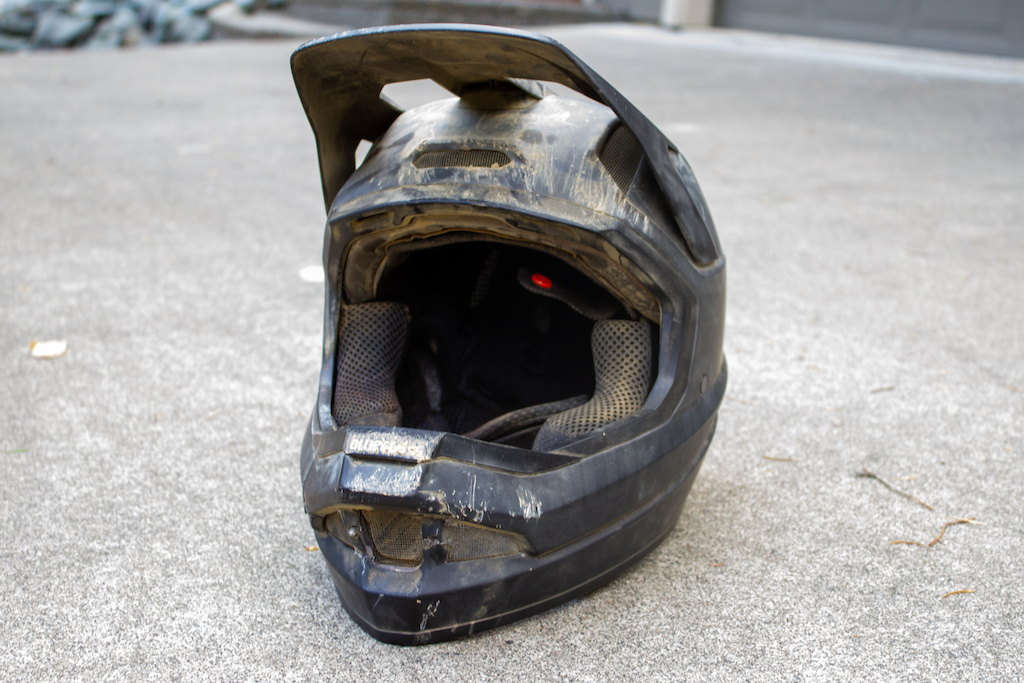
I want to preface this article by including a massive caveat, which is that it’s nearly impossible for me to compare this helmet to any other helmet in the world. I’ll never test any product, especially (thankfully) any helmet, to the same limit as this one. (Hey readers, do you see how far I’m taking this whole testing thing? That’s dedication. Or something.) I actually reviewed this helmet last year after the normal amount of testing – wearing it for a while until I could write about how it feels to wear it – but then I did exactly the thing this helmet is designed to protect against – crashed and hit my head – so I figure it’s worth writing an addendum to the original review.
• Carbon outer shell with EPS liner
• MIPS
• Varizorb EPS Liner
• Safety-release, flexible, anti-twist visor
• 15 vents
• Weight: 1100g (medium)
• Sizes: X-Small, Small, Medium, Large, X-Large
• CE, AS/NZS, ASTM standards
• MSRP: $549 USD
• www.met-helmets.com
Last September, I was riding jumps at the Hangtime Jump Jam in Bellingham, WA. I was incredibly honored to have the opportunity to ride there and excited to spend time with other strong female riders who would spend two days hyping each other up, working together on sessioning the line, and having a good time. Most of the first day did play out that way, but that evening, I crashed hard. I don’t know exactly what I did, and even the people who saw it happen say something like, “I don’t know, you were riding and overshot the jump and didn’t stay on your bike.”
Somehow, my spatial orientation changed pretty dramatically so that I landed with my head on the ground instead of my tires. From there, I was evacuated to the hospital, spent some time in a coma, eventually started recognizing my family members again, was moved after a few weeks to another hospital that specializes in treating brain injuries, started to regain some memory another few weeks later, and left the hospitals after a little over two months.
Now, I’ve done my fair share of outpatient therapy, have just barely started to (slowly and with very bad balance and coordination) trail ride again, and have what looks like a relatively “normal” life ahead of me again. My injury was undoubtedly bad. Like, I recently saw in some medical notes that I was in a “state of impending death” for the first nine days, which seems like a while. I’ve always been painfully indecisive, but come on – between life and death for that long seems a little excessive. (If you’re curious to learn more about the crash and recovery, here’s an article and here’s a podcast episode.)
All of that said, things would have been much, much worse if I had not been wearing a helmet, of course. I’m here, I can string words together enough to write an article about the helmet I was wearing, and I have a decent enough recovery ahead of me. For all of that, I’m thankful beyond what I can express.
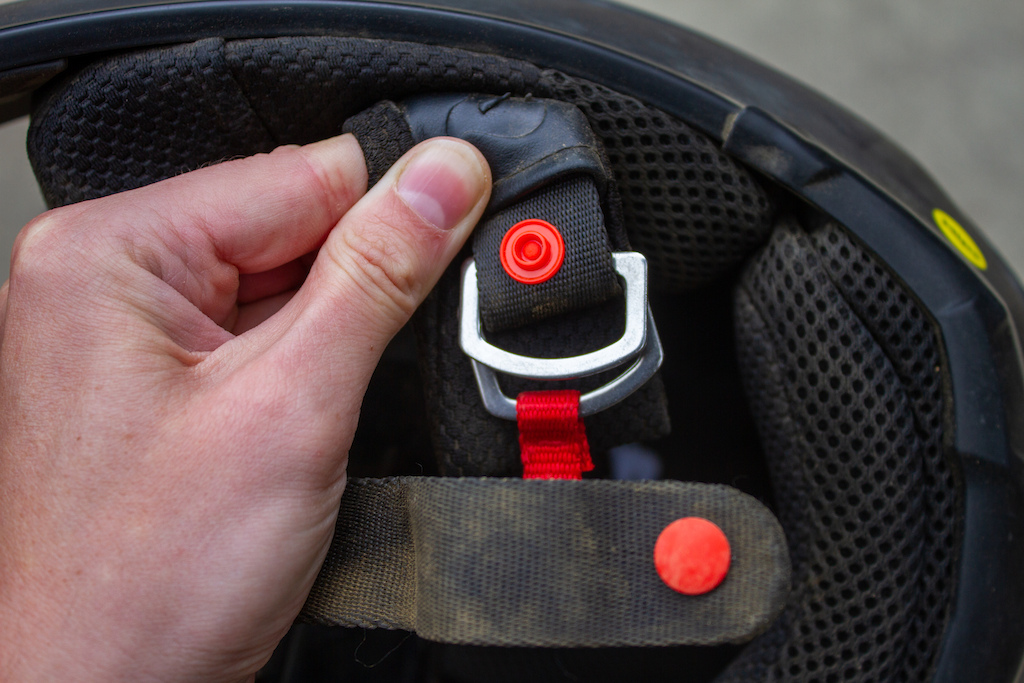

Details
The Legit Carbon is meant to be the top-tier offering from Bluegrass, the gravity-oriented subsidiary of MET Helmets. I also appreciate that Bluegrass seems to have put real thought into including only the details that matter: the chin stap uses a simple D-ring closure and a lot of the design feels very traditional, but it also uses MIPS and minimizes weight.
The helmet meets or exceeds European, Australian and New Zealand, US, and more stringent US standards for helmet safety testing, so there’s more backing up its effectiveness than my “it seems to work” opinion, or my experience of still being alive.

Ride Impressions
I really like this helmet. I wore it for most of my bike park days last summer and of course wore it again for my last big hurrah of the season, the jump jam. This helmet was always comfortable for me, and I like the way it looks. The D-ring closure makes more sense to me than any other more complicated, more modern system, and while that doesn’t make or break a helmet’s appeal, it makes me appreciate this one more.
In my actual review of this helmet, I wrote but will reiterate that the helmet worked flawlessly, with easy goggle integration and no movement, even over rough stuff. It stayed comfortable, too, the right amount of snug. The vents seem effective enough that I never felt overly hot, though I opted for a purpose-built helmet whenever I’d be pedaling and wanted an ultralight full face.
The main new piece of my testing of this helmet is that it was also user-friendly when I crashed, friendly both to me by protecting my head and to my rescuers who presumably were able to remove it. I don’t know whether they removed the cheek pads before taking the helmet off. When I found the helmet again, the chin strap was undone so presumably my rescuers figured that part out, but the cheek pads were in their usual spots. (I don’t actually remember the experience as I was very unconscious, so this is mostly guesswork.)
I was not wearing a neck brace when I crashed. (I don’t know exactly how that’s relevant since I don’t have neck or back injuries, but people keep asking me.) I don’t think I had goggles on either, but I could be wrong about that.
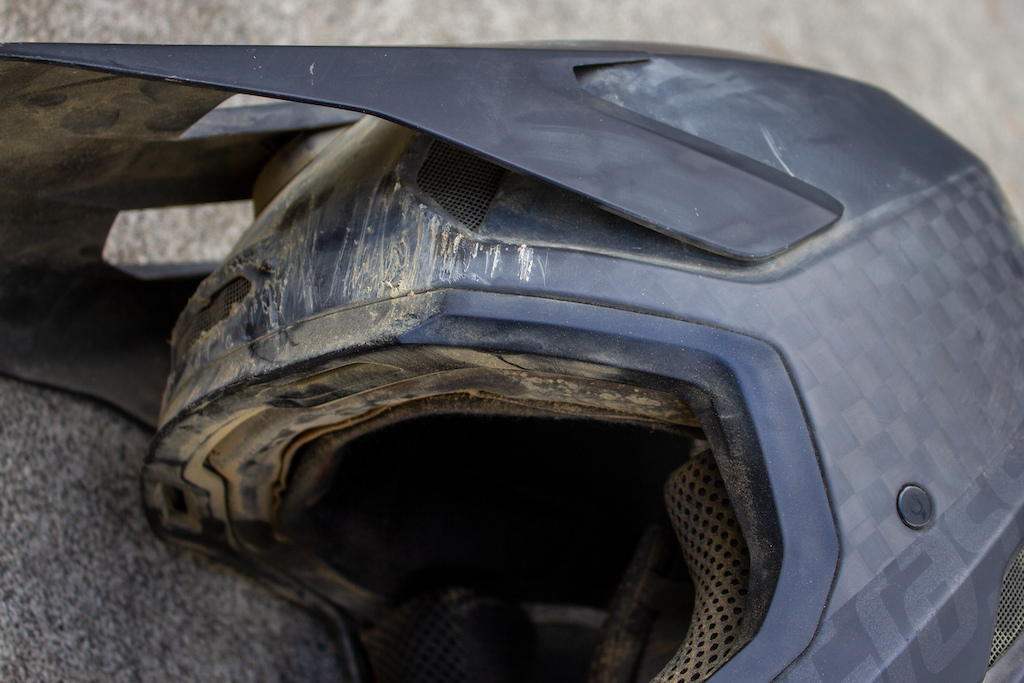

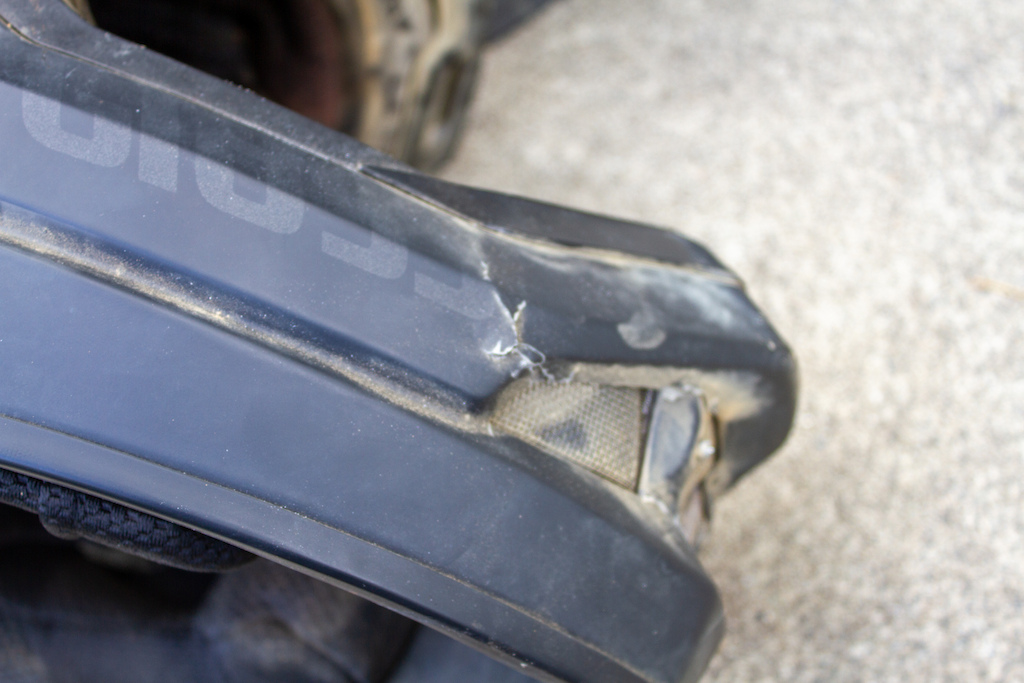
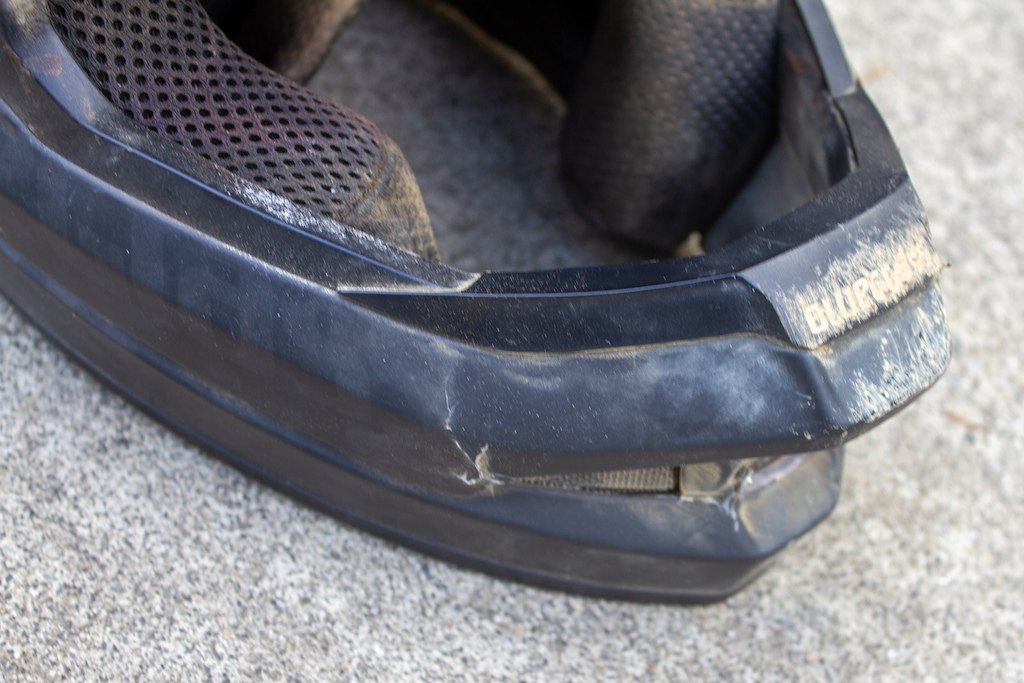
Alicia’s Take

